
Weeks 1 - 2: The Chemistry of Life
Week 1: Biochemistry Overview
In this topic, students will learn about the structure and function of the particles that make up the animal body. Students will be able to:
Define matter.
Understand the difference between atoms, compounds and molecules.
Name the subatomic particles and discuss their charges and functions.
Explain how electrons occupy atomic orbitals and their role in atomic bonding.
Name the 3 types of atomic bonds and their differences.
Identify the structures of the 4 biological molecules which make up the animal body.
Understand the difference between the 3 classifications of carbohydrates.
Discuss the importance of the essential fatty acids.
Identify the various functions of proteins in the body.
Name the functions of DNA and RNA and know the differences between the two molecules.
Activities
Activity sheet: Review of biological molecules practice - to be done as a group in class
Lectures
Reading Sources
Lecture 1: Atoms, Isotopes, Ions, and Molecules: The Building Blocks
Lecture 2: Biological Macromolecules
Video Sources
Khan Academy: Elements and Atoms. Atoms, Compounds, and Ions
Bozeman Science: Biological Molecules
Weeks 3- 5: Cell Biology
In this topic, students will learn about the structure and functions of animal cells. Students will be able to:
Reading Text
Video Reviews
Week 6: Human Organization
In this topic, students will learn about characteristics of living organisms and become familiar with different body systems which make up the human body. Students will be able to:
Explain the characteristics possessed by all living organisms.
Define the term homeostasis and explain its role in proper bodily functioning.
Identify which body cavities house which specific organs.
Identify the 11 body systems and understand the function of each.
List the main organs used in each of the 11 body systems.
Lectures & Review
Reading Text
Viewing Sources
Week 7: Digestive System Overview
In this topic, students will learn about the structure and function of the human digestive system.
Students will be able to:
List the organs composing the digestive system and the digestive function of each.
List the accessory organs of the digestive system, and describe how each aids in the digestive process.
Understand where and how each of the 4 biological molecules are broken down.
Differentiate between chemical and physical digestion.
Define the term enzyme and describe how specific enzymes aid in chemical digestion
Lectures & Review
Reading Text:
Video Reviews:
Activity
Follow the path of a bite of food as it enters the body, goes through all the components of the digestive system, and exits.
Week 8: The Respiratory System
In this topic, students will learn about the structure and function of the human respiratory system. Students will be able to:
List the structures that make up the respiratory system and describe how each aids in respiration.
Describe how and where gas exchange happens.
Name the main muscle involved in breathing and describe how it involuntarily aids in respiration.
Lectures and Review
Reading Text:
- Organs and Structures of the Respiratory System
Video reviews:
- Respiratory System, Part 1: Crash Course A&P #13 - 10min
Weeks 9-10: The Cardiovascular System
Overview
In this topic, students will learn about the structure and functions of the human cardiovascular system. Students will be able to:
Name the components of blood and discuss the function of each.
Explain how loss of blood is prevented during minor injuries.
Explain the difference between 8 variations of blood types.
Understand how the heart acts as a pump.
Describe the 4 chambers of the heart.
Discuss the difference between pulmonary and systemic circulation.
Follow a drop of blood as it makes its way through the body.
Review
Lectures & Review
Reading Text:
Video Reviews:
Weeks 11-12: Nervous System
In this topic, students will learn about the structure and function of the human nervous system. Students will be able to:
Differentiate between the central and peripheral nervous systems.
Describe the structure of neurons and glial cells.
Understand what happens at the synapse.
Be familiar with various parts of the brain and elements of the body they control.
Lecture and Review
Reading Sources
Video Reviews
Week 13: The Male Reproductive System
Overview
In this topic, students will learn about the structure and function of the human male reproductive system. Students will be able to:
Describe the structure and function of the male reproductive cell.
Describe the internal organs and the external genitalia of the male reproductive system and how each aids reproduction.
Trace the path of a sperm cell from development to fertilization.
Lectures and Review
Reading Sources
Viewing Sources
Susanna Heinze: Male Reproductive System - 21 min.
Weeks 14-15: The Female Reproductive System
Overview
In this topic, students will learn about the structure and function of the human female reproductive system. Students will be able to:
Describe the structure and function of the female reproductive cell.
Describe the internal organs and the external genitalia of the female reproductive system and how each aids reproduction.
List the order of events of the uterine cycle.
List the order of events of the ovarian cycle.
Describe the added functions of the female reproductive system past fertilization.
Review
Reading Text
Video Reviews
Crash Course A & P: Reproductive System Part 1: Female Reproductive System. - 10min
Crash Course A & P: Reproductive System Part 3: Sex and Fertilization. - 10min
